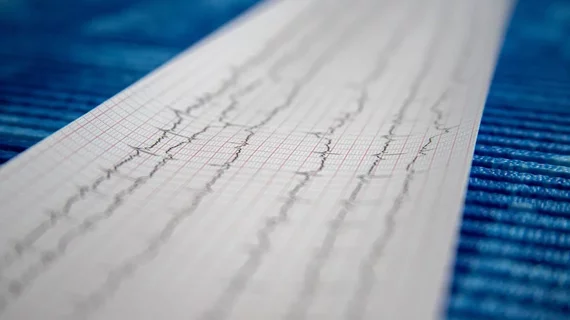AFib recurrence during the 90-day blanking period after ablation—nothing serious or a sign of trouble?
Cardiologists are often not too concerned when atrial arrhythmias occur during the 90-day “blanking period” after catheter ablation. According to a new analysis published in JACC: Clinical Electrophysiology, however, such activity may suggest an increased risk of significant issues.[1]
“Interpretation of atrial fibrillation (AFib) recurrence during the blanking period after catheter ablation is controversial among electrophysiologists,” wrote first author Charbel Noujaim, MD, MSc, with the Tulane Research Innovation for Arrhythmia Discovery at Tulane University in New Orleans, and colleagues. “Arrhythmia recurrence during the 0- to 90-day period has been attributed to various putative causes, including an acute inflammatory response after ablation, transient activation of the autonomous nervous system, and a transient edematous phase caused by energy delivery to the atrial myocardium. Therefore, recurrences during this period are not necessarily indicative of reconnection of isolated pulmonary veins and may not predict longer-term outcomes of the procedure. However, several studies suggest that early arrhythmia recurrence during the blanking period, particularly in the second and third months after the procedure, may be associated with future atrial fibrillation events.”
Noujaim et al. examined data from more than 600 patients who underwent catheter ablation for persistent AFib at one of 44 sites around the world. The mean age was 62 years old, and 79.4% were men. Patients were treated with either MRI-guided fibrosis ablation and pulmonary vein isolation (PVI) or PVI alone. All patients were given a smartphone-powered electrocardiography (ECG) device developed by Cardiac Designs and asked to perform daily ECGs. In addition to saving those daily results, they were asked to immediately send ECG data to the laboratory if they experienced any symptoms.
Overall, 47.8% of patients experienced atrial arrhythmia recurrence—including AFib, atrial flutter or atrial tachycardia—that lasted at least 30 seconds after the blanking period. While the smartphone-powered ECG devices were the study’s “primary method” for evaluating recurrence, clinical ECG readings served as backup method as necessary to confirm the findings.
Patients with and without recurrence “were comparable in terms of baseline characteristics, comorbidity profile and cardiovascular treatment.” However, the authors found that patients in the recurrence group had an AFib burden of 31.3% during the initial 90-day blanking period. Patients in the no recurrence group, meanwhile, had an AFib burden of just 7.5% during the blanking period.
Patient age and baseline fibrosis were both independent risk factors for a higher AFib burden. In addition, AFib burden during the third month of the blanking period was “the strongest predictor of arrhythmia recurrence.” Another key takeaway was that patients with an AFib burden of 18% were associated with a risk of recurrence 4-fold higher than patients with an AFib burden less than 18%.
“In short, a high AFib burden during the blanking phase holds valuable information about the success of the ablation procedure and associated clinical outcomes,” the authors wrote. “Thus, our study supports the use of smartphone devices for the assessment of AFib burden during the blanking period. Moreover, patients with a high burden might benefit from early intervention.”
Using these smartphone devices to pay closer attention to the hearts of ablation patients during the blanking period “is likely to play an important role in the treatment of AFib in the future,” the authors concluded.
Read the full analysis here.

